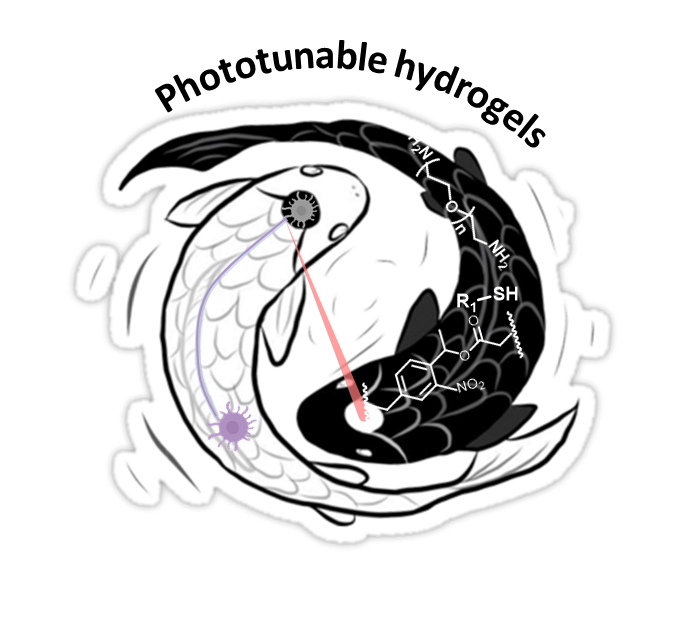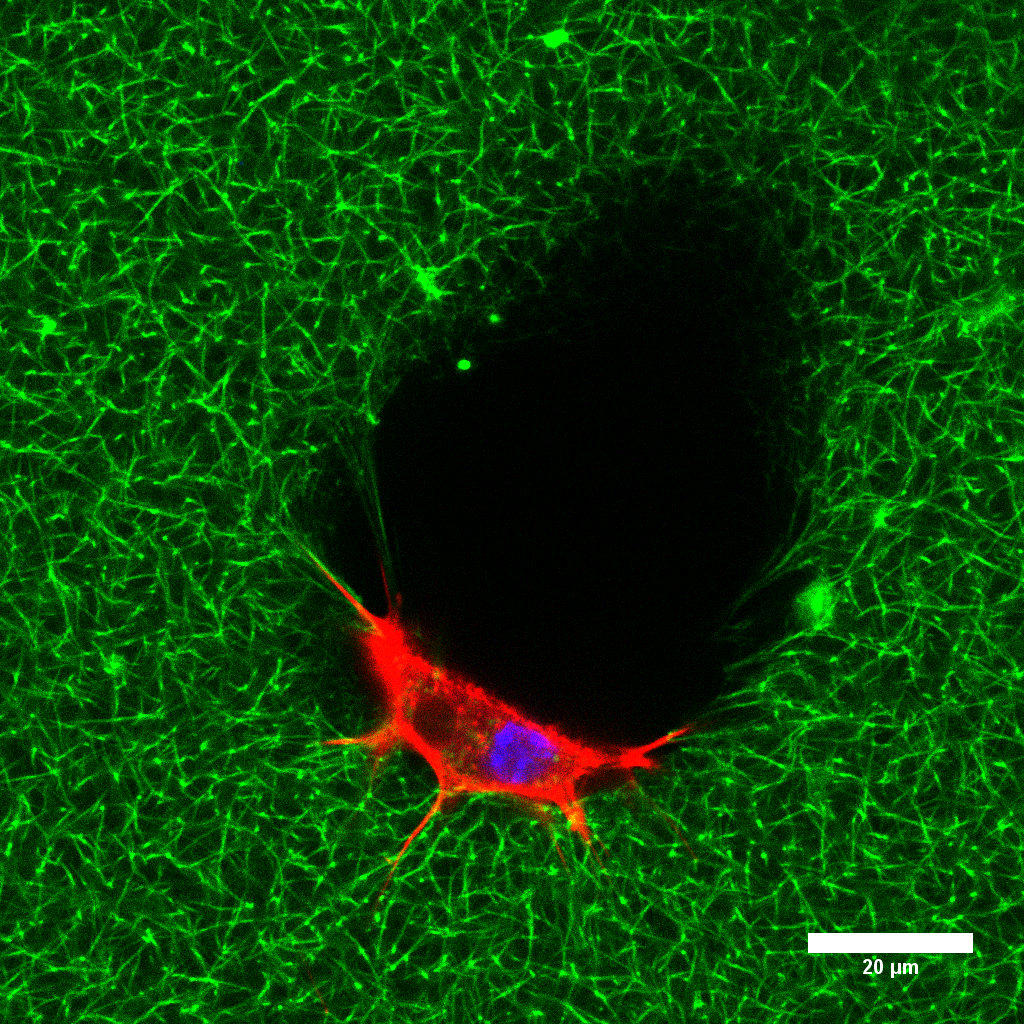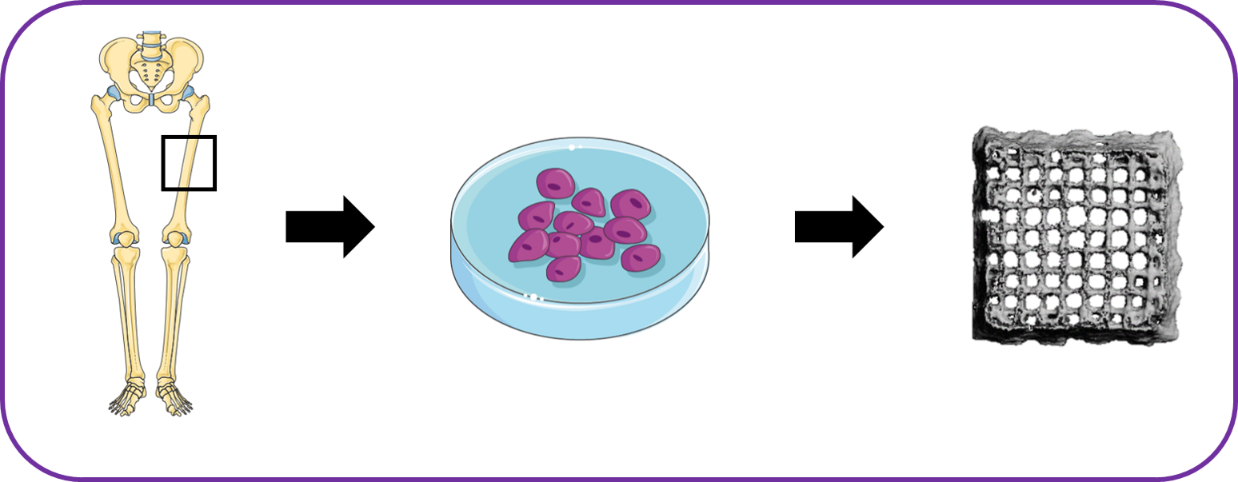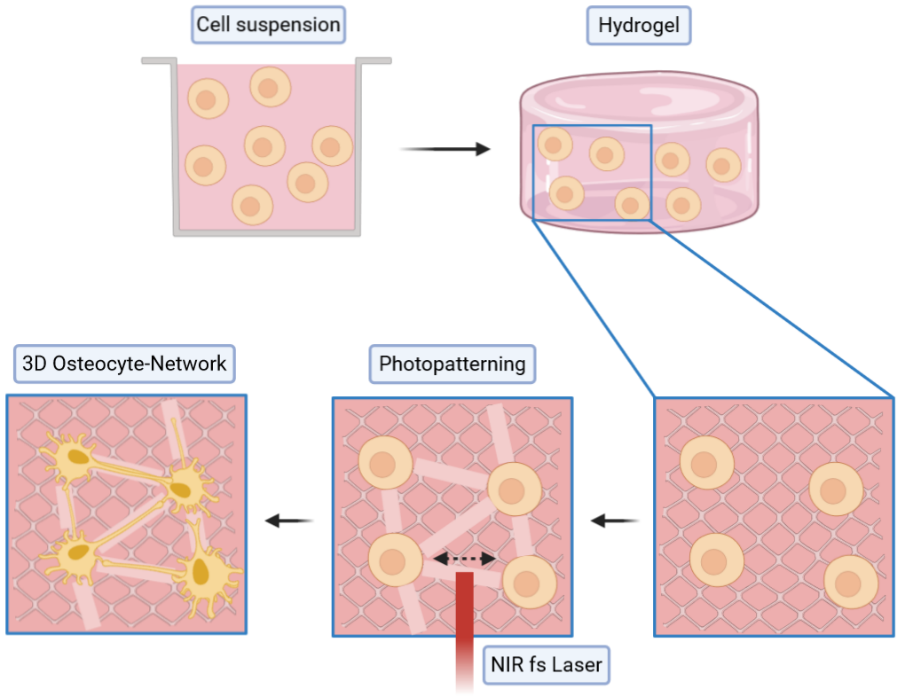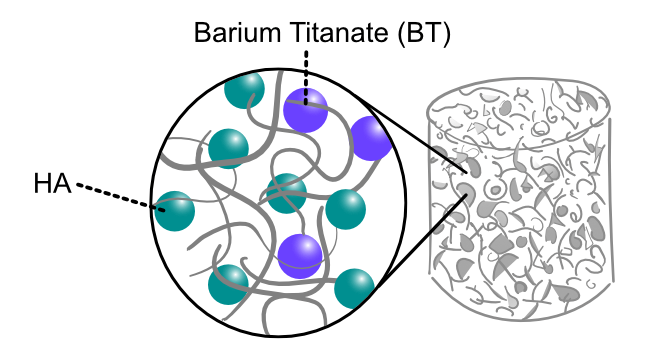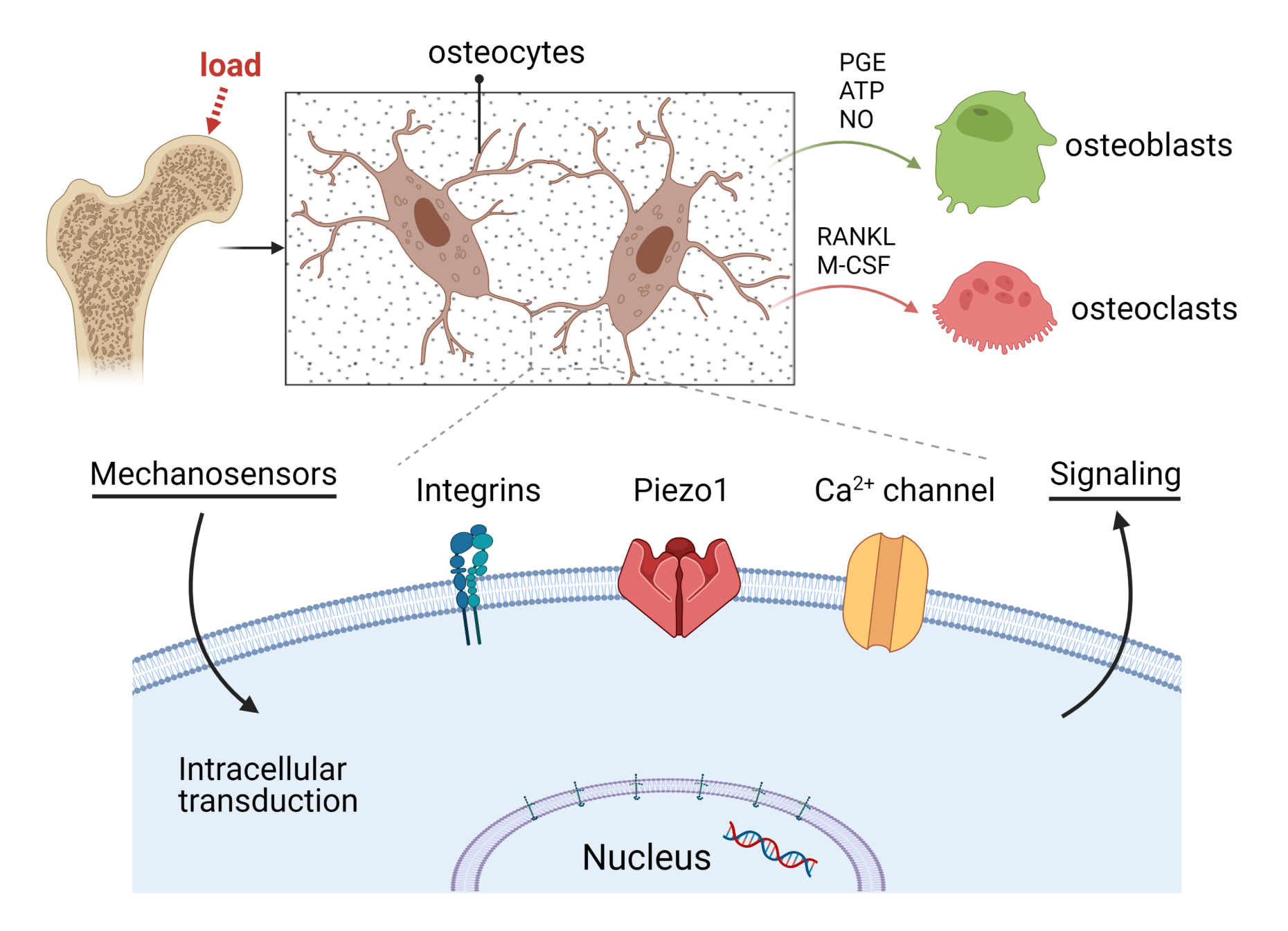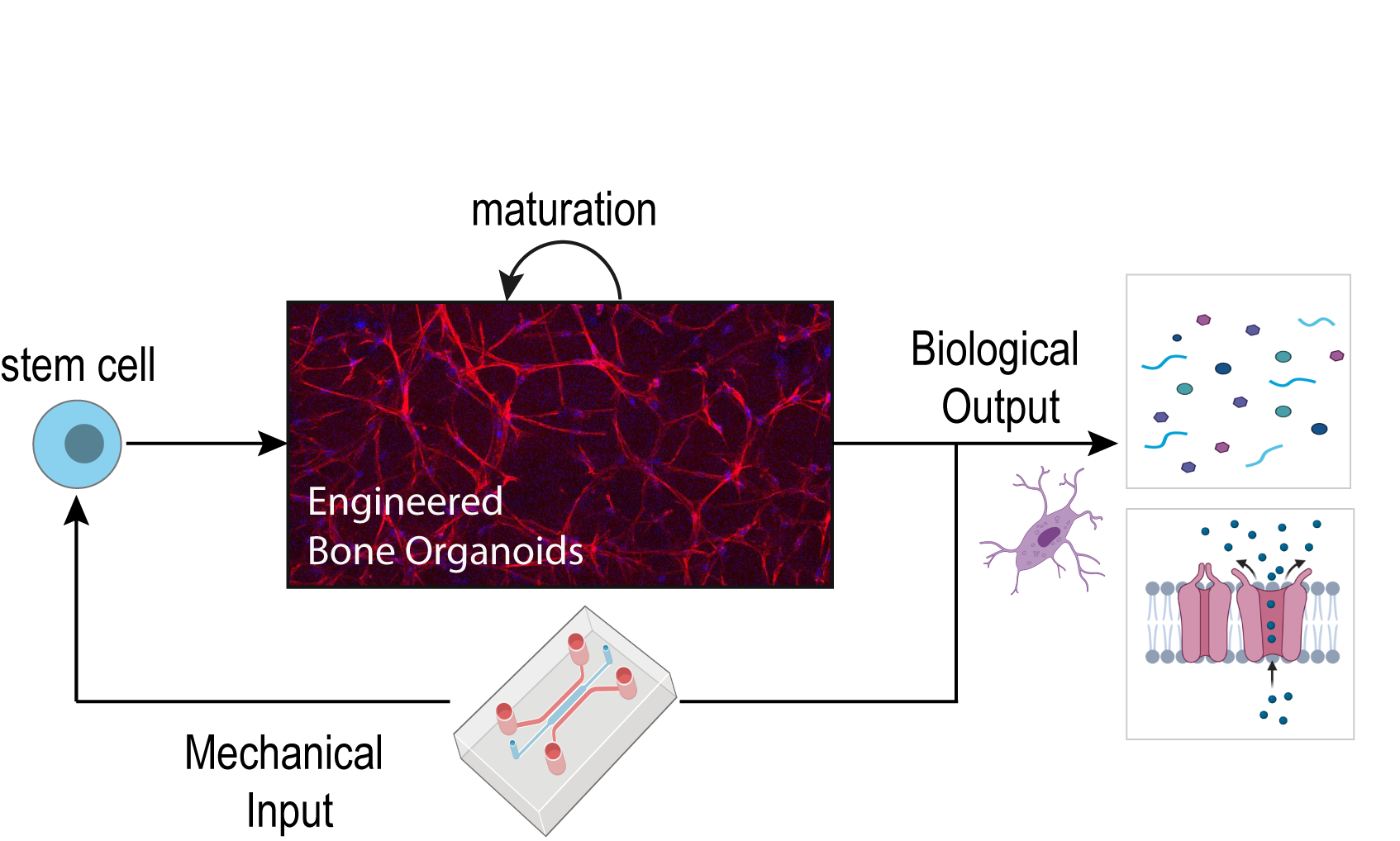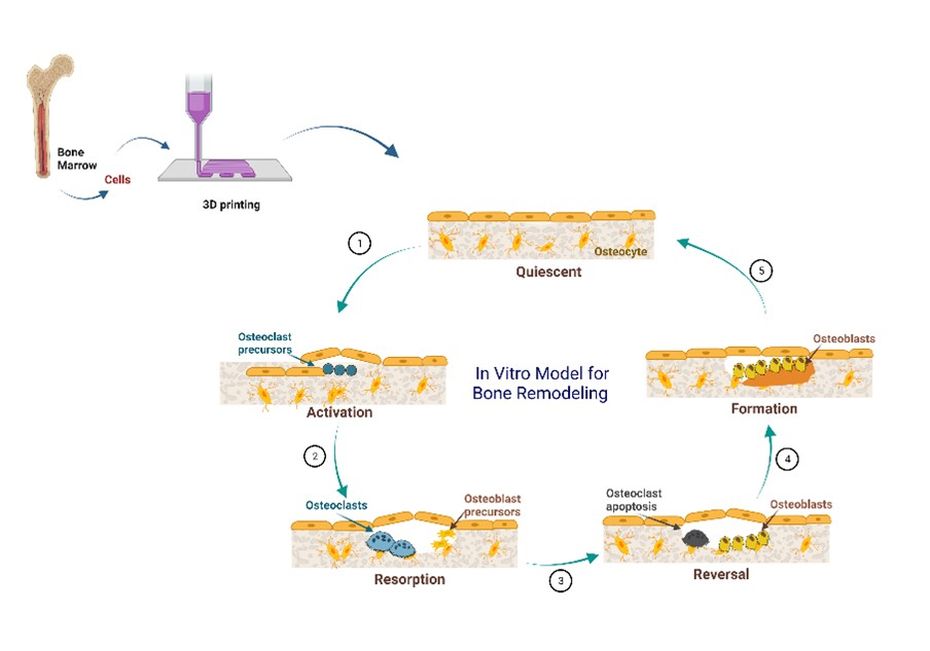Micro-Tissue Engineering and Biomaterials
Bone is a living organ that is constantly remodeled by billions of bone cells that can sense the applied mechanical loads and coordinate bone adaptation throughout human life. Developing tools and 3D bone cell models that recapitulate human bone physiology in vitro offers the means to understand bone biology at the next level, to discover new biomarkers affecting bone remodeling and to screen potential therapeutic approaches to treat human diseases.
Our Goal
In the Micro-TEB team, we aim to develop microengineered human in vitro bone models for regenerative medicine. We leverage interdisciplinary advances in developmental biology and tissue engineering to build dynamic 3D living bone cell models of in vivo-like functionality. We merge advanced biomaterials with high-resolution biofabrication and on-chip techniques to recreate the microarchitecture and function of human bone tissues. We then apply these microengineered bone organoids to study how bone cells sense and respond to mechanical signals at the molecular level.
Our Expertise
Our expertise is in the development of molecularly engineered soft biomaterials, biomimetic computer models, high-resolution biofabrication technology, tools for on-chip mechanical loading and 3D organotypic culture systems. Team members have multidisciplinary backgrounds ranging from chemistry and engineering to cell biology. The team is active in collaborating with experts with complementary expertise in bone imaging and biology.
Projects
Molecularly Engineered Biomaterials
Cell-matrix Interactions
3D Bioprinting of Bone Organoids
3D Microprinted Bone Cell Models
Bone itself is traversed by a complex system of cavities and channels, called the lacuna-canalicular-network (LCN). Osteocytes, mature bone cells that function as orchestrators of load-induced bone remodeling, reside within these cavities and stretch throughout the canaliculi to create a cellular network.
Engineered bioactive bone scaffolds
Osteocyte Mechanobiology
Human Bone-Organoid-on-Chip
In Vitro Model for Bone Remodeling
Bone is a metabolically active organ that constantly renews through remodeling cycles. Bone remodeling is accomplished within numerous bone multicellular units. Imbalanced remodeling processes could lead to bone diseases such as osteoporosis and osteopetrosis. The cellular and molecular mechanisms in a bone remodeling cycle are poorly understood due to the lack of appropriate experimental models.

